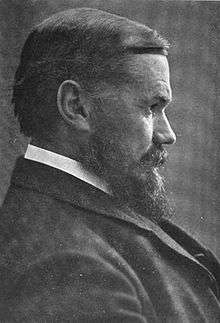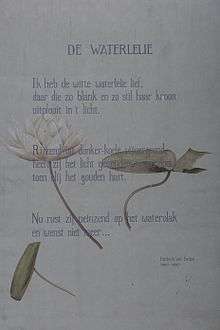Frederik van Eeden


Frederik Willem van Eeden (3 April 1860, Haarlem – 16 June 1932, Bussum) was a late 19th-century and early 20th-century Dutch writer and psychiatrist. He was a leading member of the Tachtigers, and had top billing among the editors of De Nieuwe Gids (The New Guide) during its celebrated first few years of publication, starting in 1885.
Biography
Van Eeden was the son of the Frederik Willem van Eeden (botanist), director of the Royal Tropical Institute in Haarlem. In 1880 he studied Medicine in Amsterdam, where he pursued a bohemian lifestyle and wrote poetry. Whilst living in the city, he coined the term Lucid dream in the sense of mental clarity, a term that nowadays is a classic term in the Dream literature and study, meaning dreaming while knowing that one is dreaming. In his early writings, he was strongly influenced by Hindu ideas of selfhood, by Boehme's mysticism, and by Fechner's panpsychism.
He went on to become a prolific writer, producing many critically acclaimed novels, poetry, plays, and essays. He was widely admired in the Netherlands in his own time for his writings, as well as his status as the first internationally prominent Dutch psychiatrist.
Van Eeden's psychiatrist practice included treating his fellow Tachtiger Willem Kloos as a patient starting in 1888. His treatment of Kloos was of limited benefit, as Kloos deteriorated into alcoholism and increasing symptoms of mental illness. Van Eeden also incorporated his psychiatric insights into his later writings, such as in a deeply psychological novel called "Van de koele meren des doods" (translated in English as "The Deeps of Deliverance"). Published in 1900, the novel intimately traced the struggle of a woman addicted to morphine as she deteriorated physically and mentally.
His best known written work, "De Kleine Johannes" ("Little Johannes"), which first appeared in the premiere issue of De Nieuwe Gids, was a fantastical adventure of an everyman who grows up to face the harsh realities of the world around him and the emptiness of hopes for a better afterlife, but ultimately finding meaning in serving the good of those around him. This ethic is memorialized in the line "Waar de mensheid is, en haar weedom, daar is mijn weg." ("Where mankind is, and her woe, there is my path.")

Van Eeden sought not only to write about, but also to practice, such an ethic. He established a commune named Walden (commune), taking inspiration from Thoreau's book Walden, in Bussum, North Holland, where the residents tried to produce as much of their needs as they could themselves and to share everything in common, and where he took up a standard of living far below what he was used to. This reflected a trend toward socialism among the Tachtigers; another Tachtiger, Herman Gorter, was a founding member of the world's first Communist political party, the Dutch Social-Democratic Party, in 1909.
Van Eeden visited the U.S. He had contacts with William James and other psychologists. He met Freud in Vienna, whom he practically introduced in the Netherlands. He corresponded with Hermann Hesse, Harold Williams (linguist) and was a friend of the in London (UK) living Russian anarchist Peter Kropotkin.
Van Eeden also had a keen interest in Indian philosophy. He translated Tagore’s Gitanjali.
In late years of his life, Van Eeden became a Roman Catholic.[1]
See also
References
- ↑ Verschave, Paul (1924), «Un converti hollandais, le poète Frédéric Van Heeden», Le Correspondant (25 juillet), pp. 311-338.
The Quest for a Happy Humanity
- — (August 1911). "The Quest For A Happy Humanity, First Article: The Essential Injustice Of Society". The World's Work: A History of Our Time. XXII: 14702–14713. Retrieved 2009-07-10.
- — (September 1911). "The Quest For A Happy Humanity, Second Article: As Poet And Doctor". The World's Work: A History of Our Time. XXII: 14873–14881. Retrieved 2009-07-10.
- — (October 1911). "The Quest For A Happy Humanity, Last Article: How I Came To See The Essential Wrong Underlying Commercial Life - The Way Out". The World's Work: A History of Our Time. XXII: 15006–15010. Retrieved 2009-07-10.
External links
| Wikimedia Commons has media related to Frederik van Eeden. |
- Works by Frederik van Eeden at Project Gutenberg
- Works by or about Frederik van Eeden at Internet Archive
- Works by Frederik van Eeden at LibriVox (public domain audiobooks)

- Clan-macrae.org.uk
- A Study of Dreams - Lucidity.com
- The Quest translation of De Kleine Johannes - Word-document